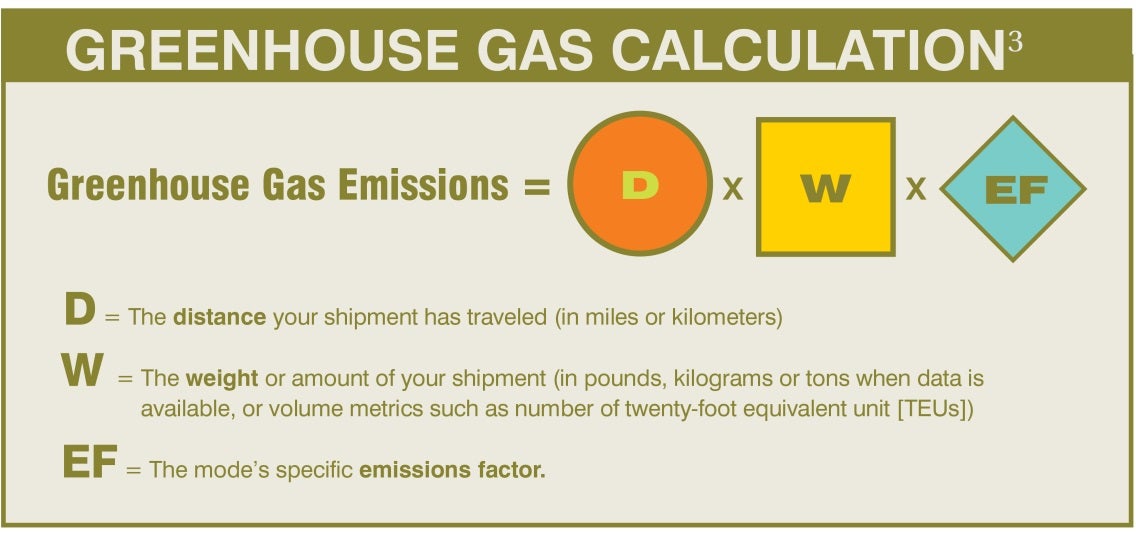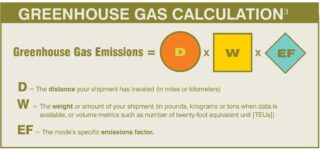- Resources
- Green Freight Math: How to Calculate Emissions for a Truck Move
Resources
Green Freight Math: How to Calculate Emissions for a Truck Move
Published: March 24, 2015 by Jason Mathers
When setting and monitoring several of the key environmental performance metrics for freight, you’ll need to know how to calculate greenhouse gas (GHG) emissions. This may sound complicated, but it’s actually quite simple.
Fuels contain carbon, which is released into the atmosphere as carbon dioxide when burned. If you know how much fuel you’ve used, you can determine most of your current GHG emissions.
You can derive fuel volume by looking at how much freight you transport, the distance that freight travels, and the specific mode of transport used. Each mode will have its own emissions factor, since some modes are more efficient than others.
Here’s a simple formula for calculating greenhouse gas emissions from a truck move:

The distance and weight and/or volume information needed to calculate greenhouse gas emissions is most likely already captured in your transportation management software. Information on mode-specific emissions factors are generated by several sources, including the U.S. Environmental Protection Agency (EPA). A list of emission factors is included on page 10 and 11 of EDF’s Green Freight Handbook.
Example: greenhouse gas calculation for a truck move
Using the formula from above, I’ll walk through a simple emissions calculation example for a truck that travels 1,000 miles with 20 short tons of cargo (a short ton is 2,000 lbs).
- Step 1: Determine the total amount of ton-miles. Multiply 1,000 miles times 20 tons, which gives us a total of 20,000 ton-miles.
- Step 2: Get the weight-based truck emissions factor for a freight truck. The average freight truck in the U.S. emits 161.8 grams of CO2 per ton-mile.
- Step 3: Multiply this emissions factor with the total ton-miles {161.8 X 20,000), which gives us a total of 3,236,000 grams of CO2.
- Step 4: Convert the total grams into metric tons. Metric tons are the standard measurement unit for corporate emissions of greenhouse gases. There are 1,000,000 grams in a metric ton. To convert our answer from step three we divide it by 1,000,000. This gives us 3.24 metric tons of CO2 for this one move.
Even if don’t have access to the tonnage data, you can still achieve a meaningful calculation based on mileage alone. You’ll find an example of mileage-based calculation on page 13 of the Green Freight Handbook.
Once you have the formula, this process of greenhouse gas calculations can be easily automated using data from your transportation management software. The key is to get started.
To learn more about getting started with green freight projects, download the Green Freight Handbook from the link below:


